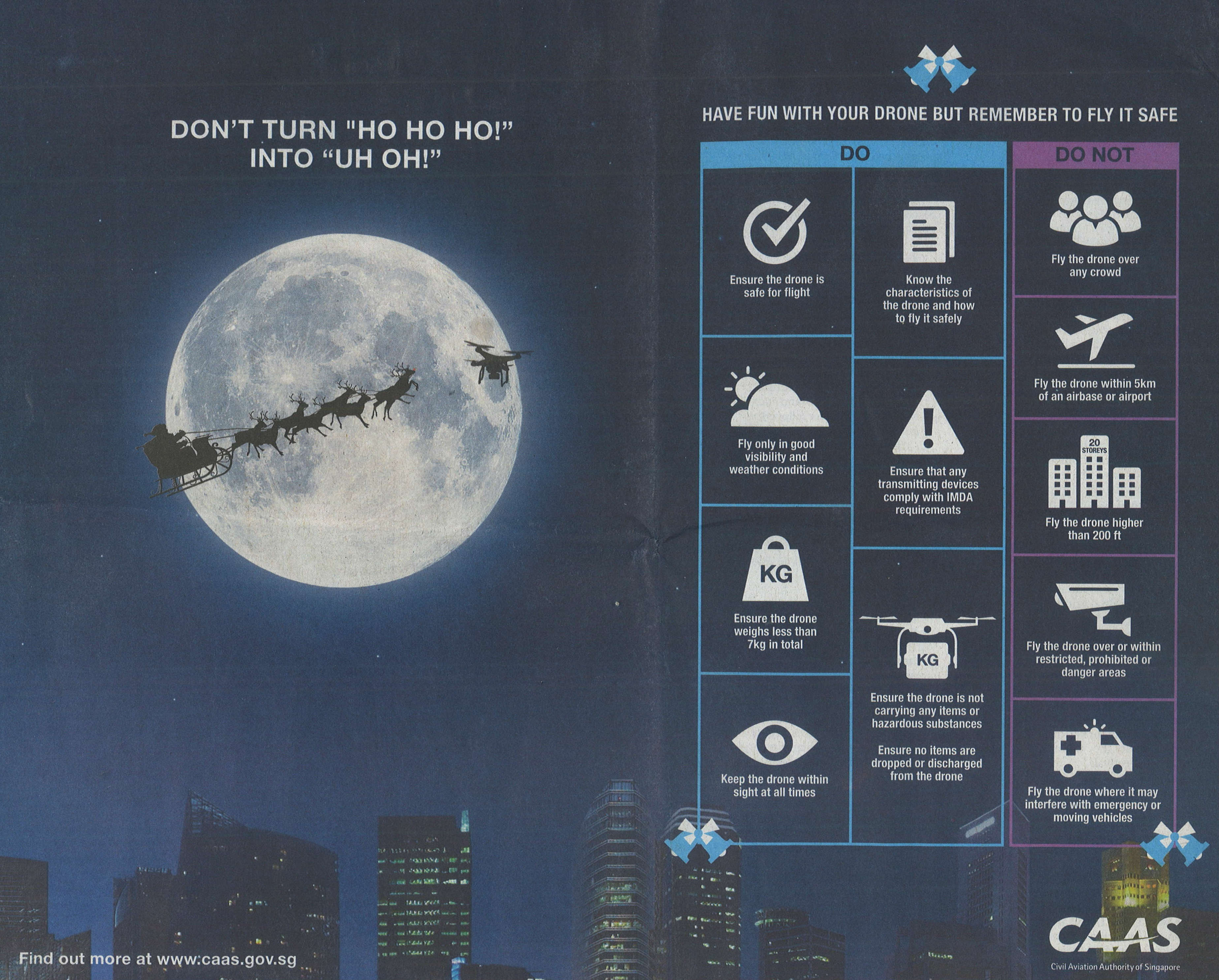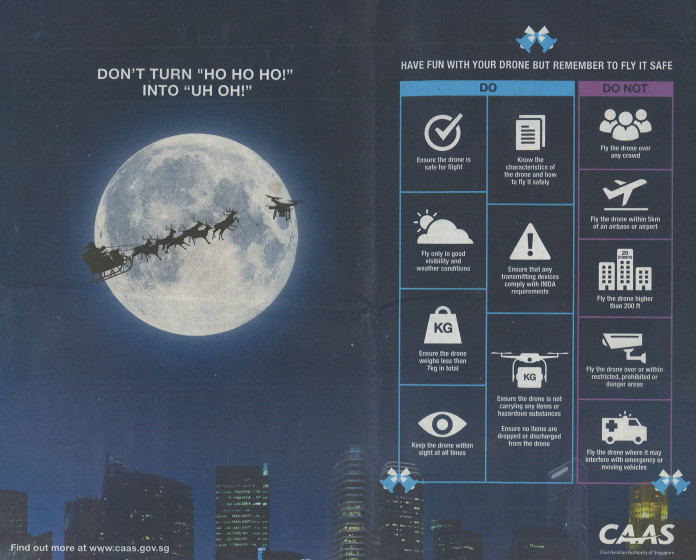SINGAPORE: Drones have become increasingly popular and affordable but their use also has implications for public and aviation safety. This has prompted the Civil Aviation Authority of Singapore (CAAS) to publish a list of do’s and don’ts on drone-flying.
In the list, CAAS reminded drone users to ensure that their device weighs less than 7kg in total, and keep the drone within sight at all times, among other points.
It also reminded users not to fly their drones over crowds, higher than 200 feet, or over restricted areas.
According to CAAS, it has received about 1,000 activity-permit applications and more than 300 operator-permit applications since June last year. These are for drones heavier than 7kg, which are typically used for commercial flights or flown in restricted or dangerous areas, such as within 5km of an aerodrome.
CAAS said that dangerous flying has not been a significant problem so far, and added that it took enforcement action against errant fliers in only 25 instances since regulations kicked in in June last year. But even a lighter drone flown in safe areas can become a safety threat, if done irresponsibly.
“There haven’t been any serious mishaps, but we wouldn’t want to wait for a day of serious mishaps,” said Mr Tan Kah Han, director of airworthiness and flight operations at CAAS. “We’d rather educate the public on drones. That is the reason why we’ve gone out with this campaign.”
Mr Tan added that when a 3kg to 4kg drone falls from 10 storeys high, it can cause fatalities if a person gets hit on the head.
It is for this reason that retailers like Mr Xu Zhuohua have also made it a point to educate new fliers on such do’s and don’ts.
“The drone-flying community in Singapore is growing,” said Mr Xu. “More and more people are flying these drones in terms of aerial photography, for racing or just for fun.”

An advisory by CAAS on the do’s and don’ts of flying a drone.
Drone user Le Hong Phuc added: “When you (fly a drone), you’re not only putting yourself at risk, but also those around you. You should know how high to fly, or how you should not intrude into people’s privacy. And in the case of a malfunction, you should at least know how to handle the situation, instead of letting it crash into someone.”
CAAS added that it is also reviewing the rules on drones, as technology and user patterns change. These include when a drone can be considered a toy or something that needs to be registered and requires a license to be flown.





